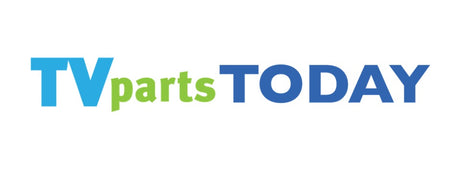Television has come a long way — from flickering images on mechanical screens to ultra-clear smart displays that stream content from across the globe. This technological transformation didn’t just change how we watch TV — it revolutionized the skills, tools, and strategies needed to repair them. Let’s dive into the rich history of television, highlighting key milestones and the evolving landscape of TV repair.
⚙️ The Early Days of Television: Mechanical to Electronic
In the earliest days of television, mechanical systems reigned supreme. Inventors like John Logie Baird experimented with rotating disks and mirrors to scan and transmit images. While innovative, these early designs had limitations:
-
❗Poor image quality
-
❗Synchronization issues
-
❗Bulky, fragile components
The real breakthrough came with the transition to electronic television. Innovators like Philo Farnsworth and Vladimir Zworykin developed technologies such as electronic scanning and the Iconoscope, laying the foundation for modern TV systems. These developments drastically improved image clarity, stability, and scalability.
🛠️ TVpartsToday Tip: When working on early electronic TVs, familiarize yourself with vacuum tubes, synchronization circuits, and the fundamental wiring of analog electronics.
📡 Key Milestones in Early TV Development
The road to mainstream television was paved with technological breakthroughs:
-
1920s: Experimental mechanical broadcasts began.
-
1930s-40s: Transition to electronic systems with CRTs (Cathode Ray Tubes).
-
1940s-50s: Widespread adoption of black-and-white television in households.
These innovations not only improved picture quality but also introduced a wave of new repair challenges. As TVs grew more complex, so did the skills required to maintain and fix them.
Black and White Television: A Cultural Shift
The arrival of black-and-white television in living rooms transformed daily life. TV became the epicenter of entertainment, information, and even marketing:
-
📰 Delivered news faster than newspapers
-
🍿 Gathered families for shows and movies
-
💼 Revolutionized advertising and consumer behavior
For technicians, these TVs were manageable but still required understanding of CRTs, signal processing, and basic circuitry.
🧰 TVpartsToday Tip: Don’t overlook the value of mastering old-school tech — it builds a strong foundation for troubleshooting today’s advanced systems.
🌈 The Transition to Color TV: Vibrant Challenges
Color TV brought a new visual dimension—but it also came with a set of fresh technical hurdles:
🔧 Color Technology Breakthroughs:
-
Dot-sequential and line-sequential systems emerged
-
CBS and Philco introduced early color broadcast formats
-
Compatibility with black-and-white signals was prioritized
While exciting for viewers, these systems were bulky and complicated. Floor-standing consoles dominated, and service technicians had to develop skills in:
-
📏 Color calibration
-
⚡ Advanced circuitry
-
🔍 Component-specific diagnostics
💡 TVpartsToday Tip: Early color TVs are collectible but temperamental — always move them with care and discharge high-voltage areas before servicing.
🧠 The Digital Shift: Analog to Smart
By the mid-2000s, digital broadcasting replaced analog. This marked a significant leap in resolution, signal stability, and efficiency. However, it also created a digital divide—many older sets became obsolete without digital converter boxes.
Key Repair Considerations:
-
📡 Digital signal reception issues
-
🔌 Compatibility with HDMI and tuner boards
-
🔧 Complex circuit boards and firmware glitches
With the rise of smart TVs, repair became as much about software as hardware. Operating systems, app compatibility, and network connectivity introduced entirely new maintenance needs.
🌐 TVpartsToday Tip: When troubleshooting smart TVs, always check for software updates and reset the network connection before digging into the hardware.
🌟 Cutting-Edge Technology: OLED, QLED, 4K & Beyond
Television technology today is defined by stunning displays and smart functionality:
🌈 OLED & QLED:
-
OLED offers deep blacks and incredible contrast via self-lit pixels.
-
QLED enhances brightness and color via quantum dots.
🔍 High Resolution:
-
4K = 3840 x 2160 pixels
-
8K = 7680 x 4320 pixels
Repairs at this level require surgical precision. Replacing a screen or mainboard in a high-end model can cost nearly as much as a new unit.
⚠️ TVpartsToday Tip: If your OLED or QLED screen cracks, replacement can be costly — consider extended warranties or insurance for high-end models.
🧰 Repairing TVs in the Modern Age
🔄 Common Issues:
-
Power board failures (e.g., Hisense power board)
-
T-Con board malfunctions
-
Broken screens (LG screen replacement, anyone?)
-
Software or firmware bugs
🛡️ Warranty & Professional Help:
-
Check warranties before attempting DIY fixes
-
Manufacturer support may offer free parts or replacements
-
Professional services ensure accurate diagnostics and reduce risk
🛠️ TVpartsToday Tip: Trying a DIY repair? Document every step with photos, label your screws, and don’t skip safety gear.
🔮 The Future of TV Repairs
As televisions become smarter, thinner, and more advanced, so must our repair strategies. The future includes:
-
🧠 AI-powered diagnostics
-
🛒 Online access to OEM parts
-
👨🔧 More accessible training for repair techs
Whether you’re restoring a vintage Baird TV or servicing a brand-new OLED, understanding the evolution of TV technology gives you an edge in tackling repairs with confidence.
💬 Need Help?
If you’re still unsure about the issue or need to replace a part, reach out to TVpartsToday. We can help you identify the exact cause of the problem and provide the right replacement part!
Would you rather watch a video? Check out our helpful Troubleshooting 101 playlist over on YouTube!
Would you rather chat with a seasoned repair expert? Head on over to our TVRepairHelp subReddit!
📦 Need help finding the right board or part?
📞 Call us at 930-212-1975 or browse our inventory online.
🛠️ DIY-friendly parts, fast shipping, and expert support – only at TVpartsToday.

